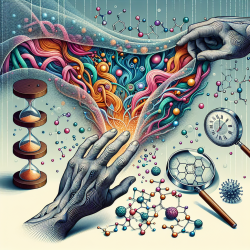Introduction
In the realm of medical research, autopsies have long been a cornerstone for understanding disease processes and improving clinical diagnostics. However, the post-mortem interval (PMI) presents challenges, particularly in the context of protein degradation, which can obscure the insights these samples offer. A recent study titled "Proteome alterations in human autopsy tissues in relation to time after death" sheds light on this complex issue, offering valuable insights that can enhance the utility of autopsy samples in proteomics.
Understanding the Study
This study, conducted by Kocsmár et al., explored the kinetics of protein degradation in human tissues post-mortem. Using liquid chromatography-tandem mass spectrometry (LC–MS/MS), the researchers analyzed tissue samples from the lungs, kidneys, and liver at various time intervals post-mortem (ranging from 6 to 96 hours). Their findings revealed organ-specific degradation kinetics, with significant protein degradation observed at different intervals depending on the organ.
Key Findings and Implications
- Organ-Specific Degradation: The study found that protein degradation occurs at different rates in different organs. For instance, significant degradation in the kidney and liver was noted at 48 hours post-mortem, while lung tissues remained relatively stable until 72 hours.
- Proteome Stability: The study suggests that sampling within 24 hours post-mortem is generally suitable for obtaining reliable proteomic data, as degradation remains within acceptable limits for most organs.
- Implications for Research: These findings highlight the importance of considering organ-specific degradation kinetics when designing research studies that utilize autopsy samples. Understanding these kinetics can help researchers make more informed decisions about sample collection and analysis.
Practical Applications for Practitioners
For practitioners and researchers in the field of proteomics, this study offers several actionable insights:
- Optimizing Sample Collection: By understanding the degradation kinetics, practitioners can optimize the timing of sample collection to ensure the highest quality data.
- Enhancing Research Design: Incorporating knowledge of organ-specific degradation into research design can improve the reliability and validity of study findings.
- Encouraging Further Research: This study opens avenues for further research into the mechanisms of protein degradation and the development of strategies to mitigate its effects.
Conclusion
The study by Kocsmár et al. underscores the potential of post-mortem proteomics to provide valuable insights into disease processes, provided that the limitations of protein degradation are carefully managed. By embracing these findings, practitioners can enhance their research methodologies and contribute to the advancement of medical knowledge.
To read the original research paper, please follow this link: Proteome alterations in human autopsy tissues in relation to time after death.










